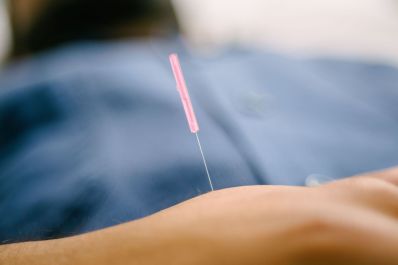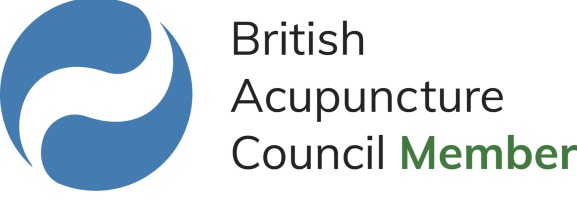
What is Acupuncture?
Based on the classic theories of Chinese Medicine, the use of a needle to puncture skin in order to influence and affect health is an ancient form of natural healing. In the 21st century, the NICE guidelines that influence NHS treatment protocols acknowledge a place in modern health provisions for this ancient modality.
To find out more about Acupuncture, how it can help, visit the British Acupuncture Council website. Also, view their video 'To The Point' below.
There are two ways in which this question can be answered. The first is to use the traditional theory of acupuncture to explain how acupuncture works.
It is this theory which a traditional acupuncturist will use to understand your condition and to select the appropriate points. This theory uses the concept of qi. For example, when somebody is in pain, this is considered to be a blockage in flow of qi. A traditional acupuncturist will select points along the meridian that is affected in order to encourage the qi to flow more freely. We are all familiar with a cartoon character that is angry: the head swells and the face goes red. Similarly, if someone is persistently angry, the qi is thought to rise up. An acupuncturist may choose points in the feet to bring the qi down.
The overall aim is to direct the flow of qi to trigger your body’s healing response and to restore physical, emotional and mental equilibrium. Treatment is designed to affect your whole being as well as your symptoms so, as the condition being treated improves, you may notice other health problems resolve and an increased feeling of wellbeing.
The second way to answer the question is to explain how acupuncture works in terms of modern science. One of the first potential mechanisms and probably the most famous is the release of endorphins. However, it is unlikely that the effects of acupuncture can be attributed to a single mechanism. There are a number of possibilities which include [1]:
1. peripheral effects (release of adenosine and nitric oxide by axonal and dorsal root reflexes)
2. spinal effects (modulation of sympathetic tone and motor reflexes)
3. modulation of endogenous descending paying inhibitory and facilitatory systems
4. changing the functional connectivity of the brain. Activation deactivation of
a. limbic structures involved in stress/ illness responses
b. the hypothalamus pituitary adrenal axis
c. the prefrontal and frontal cortices
5. restoration of the default mode state
6. modulation of parasympathetic activity
7. activation of the reward and mirror systems
8. modulation of activation of the immune system
9. expectation, attention, conditioning an extinction of conditioned responses
A
landmark study recently published in Nature showed a mechanism that is related to a specific acupuncture but not another. This study demonstrated that vagal-adrenal anti-inflammatory axis in mice was
driven by the stimulation of the point ST36 but not ST25 [2]. The importance of this study is that it suggests a specific effect of an
acupuncture point. In other words, the mechanisms of acupuncture are not simply general effects which occur regardless of where the needles are inserted.
1. Lund I, Lundeberg T. Mechanisms of acupuncture. Acupuncture and Related Therapies 2016;4(4):26-30. doi: https://doi.org/10.1016/j.arthe.2016.12.001
2. Liu S, Wang Z, Su Y, et al. A neuroanatomical basis for electroacupuncture to drive the vagal-adrenal axis. Nature 2021;Oct;598(7882)(1476-4687 (Electronic)):641-45. doi: doi: 10.1038/s41586-021-04001-4
This article has been produced by BAcC
Worcester, Kidderminster, Pershore, Droitwich, Malvern, Stourport, Evesham,
Copyright: Julia Foster. Last edited: February 2024


